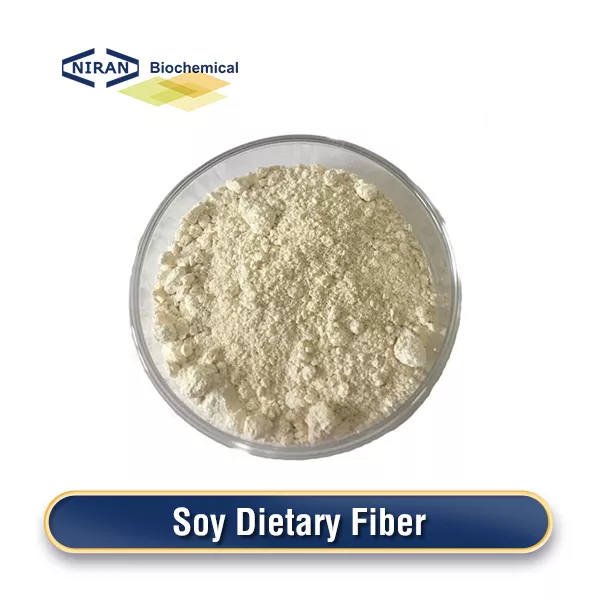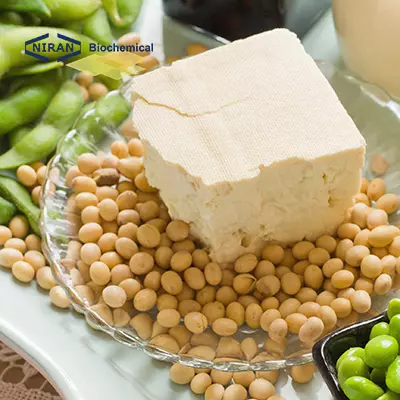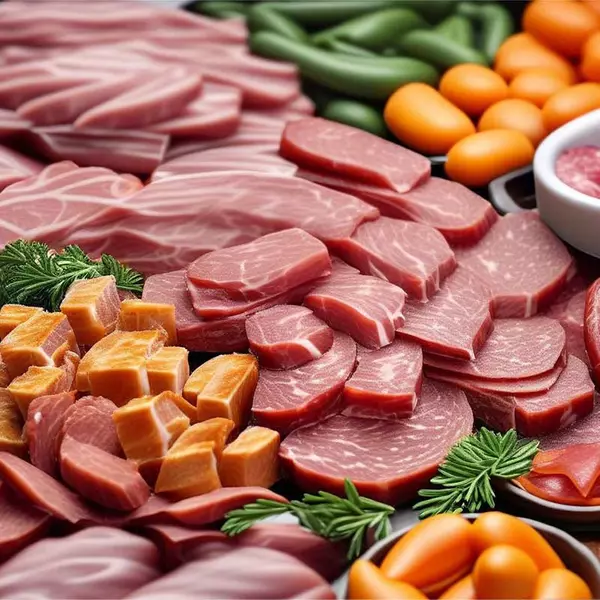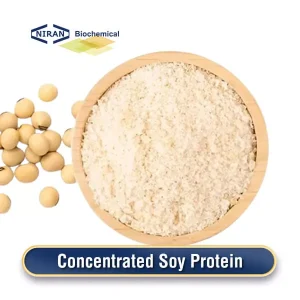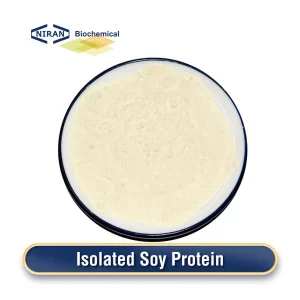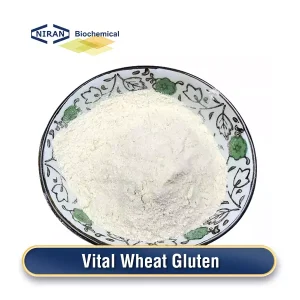What Is Soy Dietary Fiber?
Soy dietary fiber is a high-fiber powder extracted from soybeans, usually in the form of light yellow to dark brown powder. It has good water absorption capacity and stability, and is not easily affected by heat, acid and alkali environments, so it is widely used in food processing.
Soy dietary fiber is often used in baked products, meat substitutes, dairy substitutes, and functional foods to increase the fiber content of the product, improve texture and taste, while providing additional nutritional value and helping to promote digestive health.
Soy dietary fiber is a high-fiber powder extracted from soybeans, usually in the form of light yellow to dark brown powder. It has good water absorption capacity and stability, and is not easily affected by heat, acid and alkali environments, so it is widely used in food processing.
Soy dietary fiber is often used in baked products, meat substitutes, dairy substitutes, and functional foods to increase the fiber content of the product, improve the texture and taste, and provide additional nutritional value, which helps promote digestive health.
In China, the main preparation processes of soy dietary fiber include wet extraction, dry extraction, and enzymatic hydrolysis. Wet extraction is the most mainstream method, which removes soluble components from soybeans and retains dietary fiber components such as cellulose to obtain high-purity dietary fiber powder. This process can effectively improve the purity of fiber and product quality, and is widely used in food processing.
Dry extraction and enzymatic hydrolysis are also used, among which dry extraction is simpler, but may not completely remove non-fiber components; enzymatic hydrolysis uses specific enzymes to efficiently remove soluble components and improve the purity of dietary fiber. Although enzymatic hydrolysis has high processing requirements, wet extraction is still the most commonly used preparation process.
Technical Data:
| Product Item | Result |
| Type | Soy Dietary Fiber |
| Appearance | Milk White |
| Style | Dried |
| Taste and Smell | Normal Taste,without peculiar smell |
| Protein | Max.20%( on dry basis) |
| Moisture | Max.8% |
| Ash | Max.6% |
| Fat | Max.1% |
| Particle Size | Min.95%(Through 100 mesh) |
| Total Edible Fiber | Min.65%( on dry basis) |
| Total Plate Count | Max.30000cfu/g |
| E.Coli | Negative |
| Salmonella | Negative |
| AS | Max.0.5mg/kg |
| Pb | Max.0.5mg/kg |
| Hg | Max.10ug/kg |
Recommended Dosage:
| Food name | Maximum usage(g/kg) |
| Bread | 5-10 g/kg |
| Biscuits | 5-15 g/kg |
| Pizza dough | 10-20 g/kg |
| Ice cream | 2-5 g/kg |
| Chocolate | 2-5 g/kg |
| Yogurt | 2-5 g/kg |
| Milkshake | 2-5 g/kg |
| Meat substitutes | 20-40 g/kg |
| Salad dressing | 2-5 g/kg |
| Jam | 2-5 g/kg |
| Vegetarian fish balls | 20-40 g/kg |
| Plant cheese | 5-10 g/kg |
| Popcorn | 2-5 g/kg |
| Ham | 10-20 g/kg |
| Fish balls | 10-20 g/kg |
Soy Dietary Fiber Has A Wide Range Of Uses
- Soy dietary fiber is a high-quality source of dietary fiber that can significantly increase the fiber content in food, help people reach the recommended daily dietary fiber intake, and contribute to digestive health and prevent constipation.
- It improves the texture of food by increasing water retention capacity and forming gels, making it softer or chewier and improving the taste. For example, adding soy dietary fiber to bread and cakes can increase softness and maintain freshness.
- Soy dietary fiber is hygroscopic and can retain moisture in food, thereby extending the shelf life of food and preventing drying and caking.
- Since soy dietary fiber is not completely digested and absorbed by the human body, adding it to food can increase the volume of food without increasing calories, making it suitable for low-calorie and weight-loss foods.
- By lowering cholesterol, dietary fiber lowers the risk of cardiovascular disease. Soy dietary fiber can bind cholesterol in the intestines and help it be excreted from the body.
- In foods such as dairy substitutes and meat substitutes, it acts as an emulsifier stabilizer to improve the structure and water retention of the product and prevent separation and stratification.
User Asked Question:
Q: Is there a difference between soy dietary fiber and soy protein powder?
A: Soy dietary fiber and soy protein powder are two different products with different sources and ingredients. Soy dietary fiber mainly comes from soybean dregs, containing cellulose, hemicellulose and lignin. Its main function is to increase dietary fiber content, improve food texture, extend shelf life, and help digestion health and lower cholesterol.
Soy protein powder is a high-protein product extracted from soybeans. The protein content is usually above 70%. It is mainly used to increase the protein content in food, help muscle growth and repair, and is a common supplement for athletes and fitness enthusiasts.
It is widely used in protein-fortified foods, dairy substitutes and meat substitutes, providing high-quality plant protein and improving food structure.
In general, soy dietary fiber mainly provides dietary fiber and improves the nutritional value and texture of food; soy protein powder mainly provides high protein, enhances the nutritional value of food, and supports muscle repair and growth. Both play an important role in food processing and nutritional supplementation.

